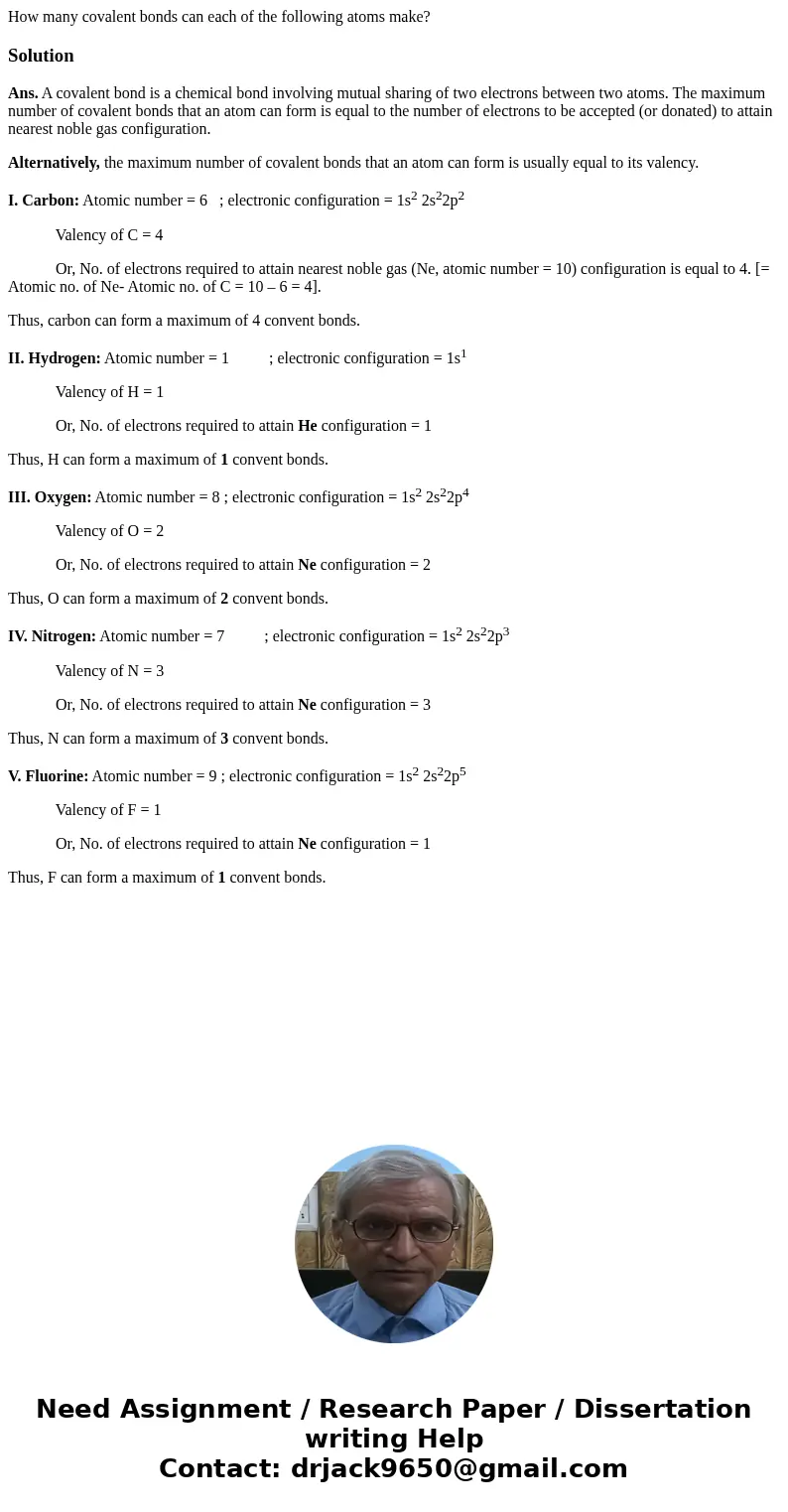How many covalent bonds can each of the following atoms make
Solution
Ans. A covalent bond is a chemical bond involving mutual sharing of two electrons between two atoms. The maximum number of covalent bonds that an atom can form is equal to the number of electrons to be accepted (or donated) to attain nearest noble gas configuration.
Alternatively, the maximum number of covalent bonds that an atom can form is usually equal to its valency.
I. Carbon: Atomic number = 6 ; electronic configuration = 1s2 2s22p2
Valency of C = 4
Or, No. of electrons required to attain nearest noble gas (Ne, atomic number = 10) configuration is equal to 4. [= Atomic no. of Ne- Atomic no. of C = 10 – 6 = 4].
Thus, carbon can form a maximum of 4 convent bonds.
II. Hydrogen: Atomic number = 1 ; electronic configuration = 1s1
Valency of H = 1
Or, No. of electrons required to attain He configuration = 1
Thus, H can form a maximum of 1 convent bonds.
III. Oxygen: Atomic number = 8 ; electronic configuration = 1s2 2s22p4
Valency of O = 2
Or, No. of electrons required to attain Ne configuration = 2
Thus, O can form a maximum of 2 convent bonds.
IV. Nitrogen: Atomic number = 7 ; electronic configuration = 1s2 2s22p3
Valency of N = 3
Or, No. of electrons required to attain Ne configuration = 3
Thus, N can form a maximum of 3 convent bonds.
V. Fluorine: Atomic number = 9 ; electronic configuration = 1s2 2s22p5
Valency of F = 1
Or, No. of electrons required to attain Ne configuration = 1
Thus, F can form a maximum of 1 convent bonds.

 Homework Sourse
Homework Sourse